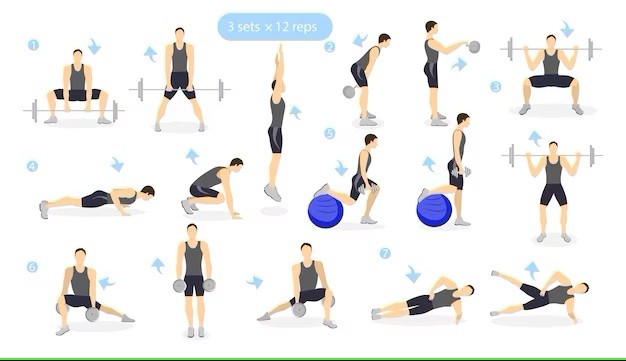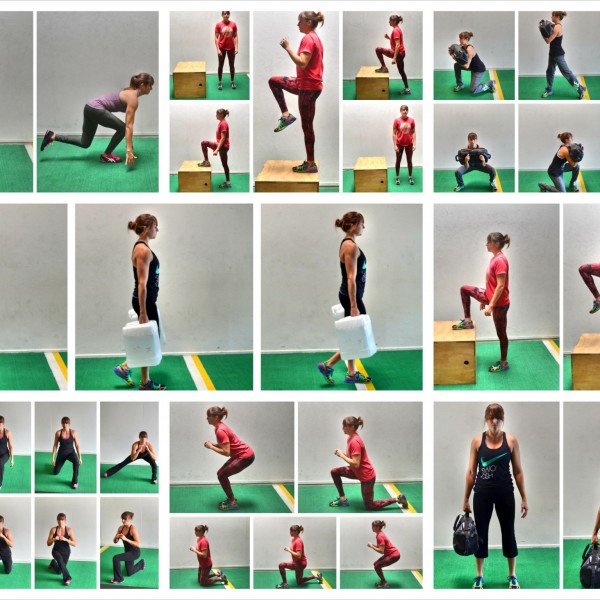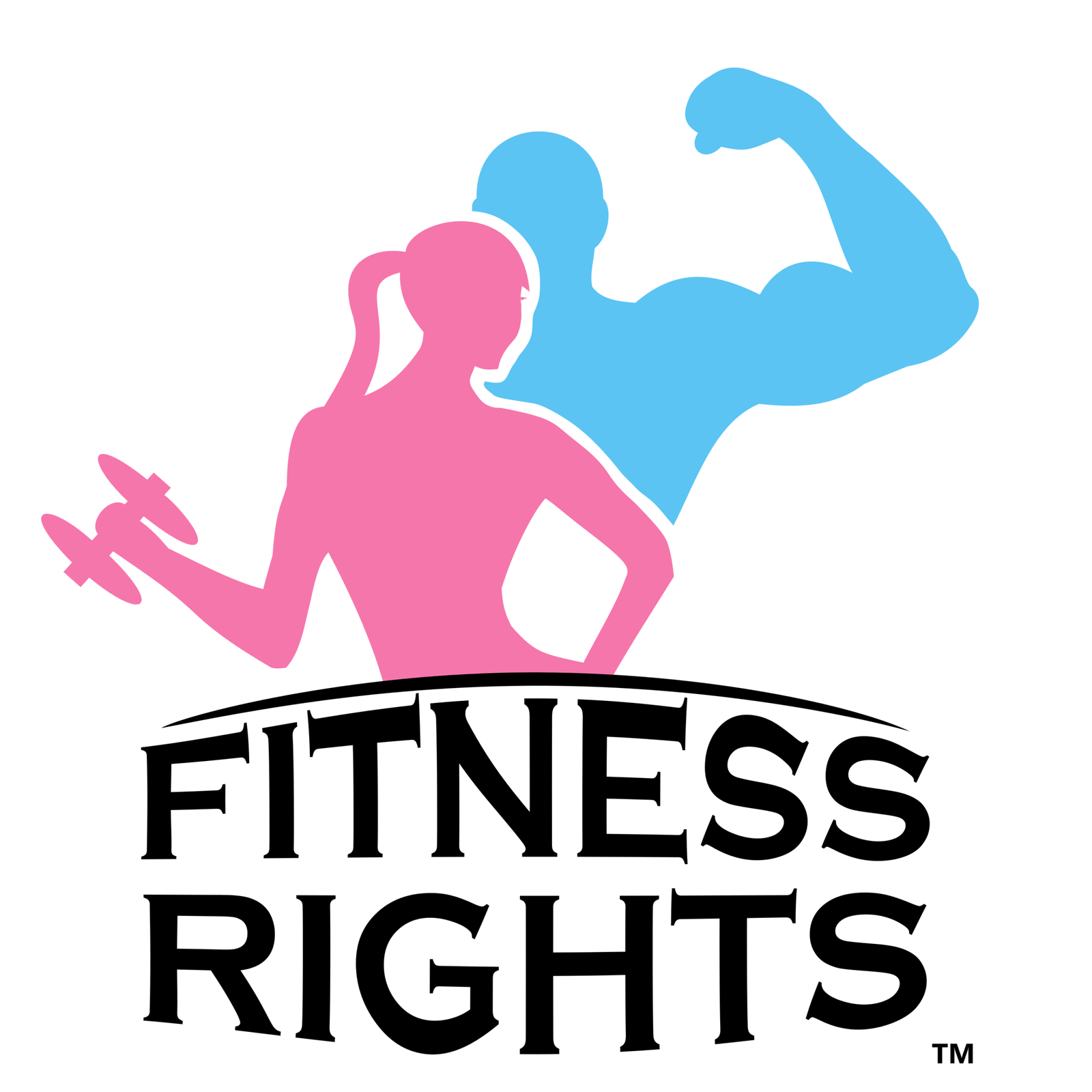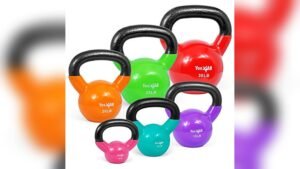You want to stay strong, independent, and full of energy as you age. But how do you keep your body ready for everyday activities like climbing stairs, carrying groceries, or simply getting up from a chair?
Table of Contents
ToggleFunctional fitness exercises are the answer. These workouts focus on movements you use every day, helping you build strength, improve balance, and boost flexibility. Whether you’re just starting out or looking to stay active, this guide will show you simple, effective exercises designed especially for seniors.
Keep reading, and discover how to make your daily life easier and more enjoyable with functional fitness.
Credit: www.azumio.com
Benefits Of Functional Fitness For Seniors
Functional fitness exercises offer many benefits for seniors. These exercises focus on movements used in daily life. They help seniors stay active and healthy longer. Functional fitness improves overall quality of life and well-being.
By practicing functional fitness, seniors can reduce the risk of falls and injuries. These exercises build strength, balance, and flexibility. They support seniors in maintaining their independence and confidence.
Improved Strength And Mobility
Functional fitness increases muscle strength needed for everyday tasks. It helps seniors stand, walk, and carry objects with ease. Improved mobility reduces stiffness and joint pain. This leads to better movement and less discomfort.
Enhanced Balance And Stability
Balance exercises help prevent falls, a common risk for seniors. Functional fitness trains the body to stay steady during activities. This stability boosts confidence and safety in daily routines. Improved balance also supports better posture and coordination.
Increased Independence
Functional fitness enables seniors to perform daily tasks alone. It supports activities like cooking, cleaning, and shopping. Staying active helps seniors live independently longer. This independence improves mental health and overall happiness.

Credit: greensafaris.com
Top Functional Exercises
Functional exercises help seniors maintain strength, balance, and mobility. These movements improve everyday activities like climbing stairs or carrying groceries. Focusing on simple, effective exercises supports independence and overall health. Below are some top functional exercises for seniors that target key areas of fitness.
Squats For Lower Body Strength
Squats build strength in the legs and core muscles. They help with sitting down and standing up safely. Start with chair squats by lowering to a chair and standing back up. Keep feet shoulder-width apart and back straight. Squats increase stability and reduce fall risk.
Walking For Cardiovascular Health
Walking improves heart and lung function. It also boosts mood and energy levels. Seniors can walk indoors or outdoors at a comfortable pace. Regular walking supports weight management and joint health. Aim for at least 20 to 30 minutes most days.
Resistance Training With Weights Or Bands
Using light weights or resistance bands strengthens muscles. This training helps maintain bone density and muscle mass. Simple exercises include bicep curls, shoulder presses, and leg lifts. Perform two to three times per week for best results. Always use controlled movements and proper form.
Balance Workouts Like Tai Chi And Yoga
Tai Chi and yoga improve balance and flexibility. These gentle exercises reduce fall risk and increase body awareness. They also promote relaxation and reduce stress. Practice slow, controlled movements and deep breathing. Join a class or follow online videos made for seniors.
Flexibility Through Stretching And Pilates
Stretching keeps muscles and joints flexible. Pilates strengthens core muscles and improves posture. Both help seniors move more easily and prevent injuries. Include gentle stretches for the neck, back, and legs daily. Pilates sessions can be done two to three times weekly.
Designing A Weekly Workout Plan
Designing a weekly workout plan is key for seniors to stay active and healthy. A clear plan helps balance different types of exercises. It supports steady progress and reduces injury risk. This section outlines how to build an effective weekly routine.
The plan should include strength, cardio, and recovery days. Each part plays a unique role in functional fitness. The goal is to improve everyday movements and overall wellness.
Circuit Training Structure
Circuit training mixes strength and cardio in short bursts. Seniors perform a set of exercises one after another with little rest. This keeps the heart rate up while building muscle.
A typical circuit has three groups of exercises. Each group targets different muscle areas. For example, one circuit may focus on legs, another on arms, and the last on core. Repeat each circuit two to three times.
This structure saves time and keeps workouts interesting. It also improves endurance and strength together.
Balancing Strength, Cardio, And Recovery
Strength training builds muscle and bone health. Cardio improves heart and lung function. Recovery allows muscles to repair and grow stronger.
A balanced week might include three strength days and three cardio days. One or two days are for rest or light activity like walking or stretching. This mix helps avoid burnout and injuries.
Variety also keeps motivation high. It helps seniors gain strength, stamina, and flexibility over time.
Adapting Workouts To Individual Needs
Each senior has different fitness levels and health conditions. Workouts should be adjusted to fit these needs. Start with low-impact exercises if joint pain exists.
Progress slowly by increasing intensity or duration. Use chair support or lighter weights as needed. Consult a doctor before starting any new routine.
Listening to the body is important. Modify exercises to avoid discomfort and promote safety.

Credit: egyptproco.com
Safety Tips And Modifications
Safety is key for seniors practicing functional fitness exercises. Simple changes and careful attention keep workouts safe and effective. Modifications help avoid injury and build confidence. These tips ensure every movement supports strength and balance without strain.
Starting With Chair Squats
Chair squats offer a safe way to build leg strength. Use a sturdy chair and sit down slowly. Stand up using your leg muscles, not your hands. This reduces fall risk and improves control. Repeat at a comfortable pace to build endurance.
Using Support For Balance Exercises
Balance exercises improve stability but can be tricky. Hold onto a countertop or stable surface for support. This helps prevent falls while training your muscles. Gradually reduce support as confidence grows. This safe approach builds steady balance over time.
Listening To Your Body
Pay close attention to how your body feels during exercise. Stop if you feel pain or dizziness. Mild muscle soreness is okay but sharp pain is not. Rest as needed and adjust exercises to your comfort. This respect for your limits promotes long-term fitness success.
Incorporating Functional Fitness Into Daily Life
Incorporating functional fitness into daily life helps seniors maintain strength and independence. Functional exercises mimic everyday movements, making daily tasks easier. Small changes in routine can improve balance, flexibility, and muscle tone. Consistency builds confidence and reduces the risk of falls. Practical exercises fit well into home and outdoor activities. Staying motivated is key to long-term success.
Simple Exercises At Home
Start with chair squats to strengthen legs and core. Use kitchen counters for balance while doing calf raises. Try seated marches to boost circulation and mobility. Wall push-ups improve upper body strength safely. These exercises require no special equipment and fit easily into daily routines.
Staying Active Outdoors
Walking in the park enhances cardiovascular health and mood. Gardening offers light strength training and flexibility benefits. Gentle stretching on a bench helps maintain range of motion. Use stairs carefully to build leg strength and coordination. Fresh air and nature make exercise more enjoyable and refreshing.
Motivation And Consistency Strategies
Set small, clear goals that feel achievable each day. Track progress with simple notes or a calendar. Find a workout buddy for support and encouragement. Celebrate improvements, no matter how small they seem. Keep routines varied to prevent boredom and stay engaged.
Frequently Asked Questions
What Is The 3 3 3 Rule For Working Out?
The 3 3 3 rule for working out means doing three circuits of three exercises, repeated three times each. Alternatively, it organizes your week into three days of strength, three days of cardio, and three days of rest or active recovery.
What Is The Number One Exercise Seniors Should Do?
The number one exercise seniors should do is squats. Squats strengthen legs and core, improving balance and daily movement. Start with chair squats to build strength safely. Combine squats with walking, balance, and flexibility exercises for overall fitness and fall prevention.
What Are The 5 Pillars Of Functional Movement?
The 5 pillars of functional movement are stability, mobility, strength, balance, and coordination. These pillars support efficient, safe daily activities and improve overall fitness.
What Is The 5 4 3 2 1 Training Method?
The 5 4 3 2 1 training method uses five senses to ground you in the present moment. It involves naming 5 things you see, 4 you feel, 3 you hear, 2 you smell, and 1 you taste. This technique reduces stress and improves focus quickly.
Conclusion
Functional fitness exercises help seniors stay strong and independent. Simple moves like squats improve balance and daily activities. Consistent practice boosts muscle strength and flexibility. Seniors can enjoy better health and confidence. Start slow and increase activity over time. Staying active supports a happier, healthier life.
Keep moving and feel the benefits every day.
No related posts.






